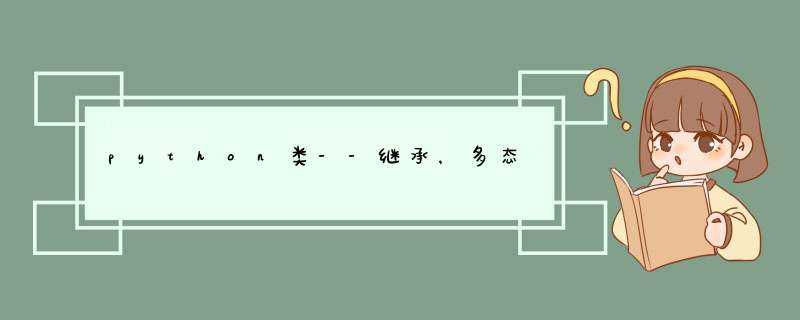
1、python类如何调用父类构造函数 __init__ (继承过程中强调父类构造方法)
-方法一: super().__init__
class Father(): def __init__(self): print("张三")class Son(Father): def __init__(self): super().__init__() print("李四")-方法二: super(自己类名,self).__init__
class Father(): def __init__(self): print("张三")class Son(Father): def __init__(self): super(Son,self).__init__() print("李四")-方法三: Father.__init__(self)
class Father(): def __init__(self): print("张三")class Son(Father): def __init__(self): Father.__init__(self) print("李四")打印结果:
2、python类如何调用父类方法 (继承过程中强调父类方法)
super().run()
class Father(): def run(self): print("run")class Son(Father): def run(self): #继承父类的方法 super().run()
3、python子类重写父类的方法 (重写也要先继承)
重写:父类提供的方法不能满足子类的需求,需要在子类中定义一个同名的方法,即为重写
重写构造函数 __init__
class Person(object): def __init__(self, name, age): self.name = name self.age = age self.money = 1000class Student(Person): def __init__(self, name, age, school): super().__init__(name, age) self.school = school print(str(age)+"那年的"+name+self.school)student=Student("ljf520hj",20,"好想去985")打印结果:
重写父类的方法,默认搜索原则:先找到当前类,再去找父类
class Person(object): def __init__(self, name, age): self.name = name self.age = age self.money = 1000 def eat(self,food): print("人吃"+food)class Student(Person): def __init__(self, name, age, school): super().__init__(name, age) self.school = school # print(str(age)+"那年的"+name+self.school) def eat(self,food,fruit): super().eat(food) print("学生"+food+fruit)student=Student("ljf520hj",20,"好想去985")student.eat("麻辣烫","水龙果")打印结果:
4、python私有属性读写
class Student(object): def __init__(self,age): self.__age=age @property def age(self): print("读年龄",self.__age) @age.setter def age(self,age): self.__age=age print("写年龄",self.__age)s= Student(1)s.age=10print(s.age)5、继承--类方法继承
class Fruit: color = '绿色' def harvest(self, color): print(f"水果是:{color}的!") print("水果已经收获...") print(f"水果原来是{Fruit.color}的!")class Apple(Fruit): color = "红色" def __init__(self): print("我是苹果")a=Apple()a.harvest("橙色")打印结果:
5、继承-构造函数的继承
class Father(object): def __init__(self, name): self.name = name print("name: %s" % (self.name)) def getname(self): return 'Father ' + self.nameclass Son(Father): def getname(self): return 'Son ' + self.nameson=Son("ljf520hj")print(son.getname())打印结果:
6、封装,继承,多态 先有封装,之后有继承,最后才是多态
class Person(object): def __init__(self,name): self.name = name def Feed_pet(self,pet): if isinstance(pet,Pet): print("pet.name:"+str(pet.nickname)+"sd"+str(pet.role),"self.name"+self.name) else: print(pet.role,"不是宠物的类型")class Pet(object): role = 'Pet' def __init__(self,nickname,age): self.nickname = nickname self.age = age def show(self): print(self.nickname,self.age)class Cat(Pet): role="猫" def __init__(self,nickname,age): super().__init__(nickname,age) print("xsss")class Dog(Pet): role="狗"class Tiger(object): role="老虎"cat = Cat("花花",1)tiger = Tiger()person=Person("张三")person.Feed_pet(cat)print("------------------------")person.Feed_pet(tiger)总结
以上是内存溢出为你收集整理的python类--继承,多态全部内容,希望文章能够帮你解决python类--继承,多态所遇到的程序开发问题。
如果觉得内存溢出网站内容还不错,欢迎将内存溢出网站推荐给程序员好友。
欢迎分享,转载请注明来源:内存溢出

 微信扫一扫
微信扫一扫
 支付宝扫一扫
支付宝扫一扫
评论列表(0条)